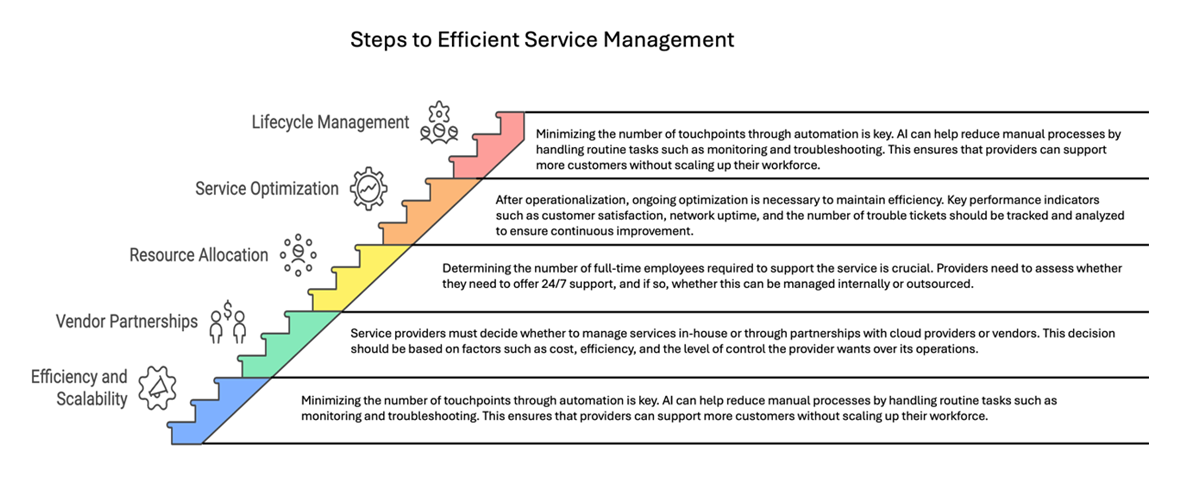How Operationalizing Managed Services Delivers a Competitive Edge

To remain competitive in an evolving and improving broadband market, service providers must supply effective and scalable managed services while satisfying customers’ needs and reducing costs. To do this, they must incorporate technology operationalization practices that demand efficient and careful planning, strategic management, and continual optimization,while simultaneously focusing on client acquisition, service delivery, and long-term value.
Importance of Customer Acquisition and Retention
Managed services are driven by customer acquisition costs, which involve significant investments in new subscribers. To stay profitable and grow managed services in a “platform as a service” model, service providers need to leverage a platform where they can introduce new services without disruption and deliver functionality to subscribers without costly re-acquisition and integration costs associated with a nonplatform-based approaches. This method boosts revenue through easier upselling and cross-selling, which promotes subscriber retention and lifetime value.
Deployment to Operationalization
Operationalizing a managed service makes new service deployment marketable, orderable, manageable, supportable, billable, and scalable for internal teams. Providers must prioritize:
- Planning, procurement, and education: Ensure you have the appropriate installation and testing gear, premises systems, software, and trained personnel for a smooth implementation.
- Automation tools and templates: These can reduce manual touchpoints, decrease errors, and lower costs. Artificial intelligence (AI) and machine learning (ML) enabled operational and customer support tools can accelerate new service rollout, time to market, and on-going support.
- Operationalized service delivery: This ensures minimal intervention for management, monitoring, and support, leading to optimized margins and customer satisfaction. Integrating AI-driven operataional monitoring technologies to detect issues before they affect service quality and tools to provide intelligent recommendations and next best steps to CSRs and technicians help operations scale.

Strategic Managed Services Considerations
Managed service delivery requires efficiency and profit maximization of broadband services in a number of areas:
- Communicating strategically with leadership: Executives are focused on a the financial impact of a service rather than its technical features. Although the technical components of operationalization are critical, senior leadership must be informed of their business worth. Operationalization must be framed in terms of client acquisition costs, profitability, churn reduction, and client lifetime value. Plus, it demonstrates how automation and AI tools can save costs and how improved service quality can yield commercial benefits that impact executive financial decision-making.
- AI and automation improve service optimization: In a competitive broadband market, service providers must constantly improve their services, and today, that relies on AI and automation for proactive service management. AI can enhance acquisition, monitor network performance in real time, predict faults before they affect users, automate typical problem fixes, eliminate manual interventions, lower costs, and improve users’ experiences.
To implement successful broadband managed services, strategy, automation with high-quality, low-touch service, and continual optimization are needed. This approach allows service providers to efficiently supply new services and stay competitive in a rapidly evolving market.
Schedule a Calix Cloud consult today to learn how to intelligently streamline your network operations.
Related Articles




